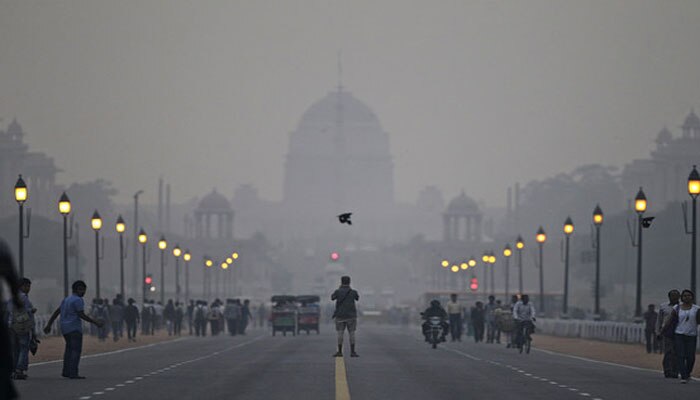Preventive measures to address Delhi’s air pollution are to promote clean fuels like CNG and electric vehicles, and switching to clean fuels like hydrogen can reduce vehicular emissions to a great extent. Under Delhi’s electric vehicle policy, all delivery service providers must convert 50% of their fleet to electric vehicles by 2023 and 100% by 2025. Encouraging farmers to adopt bio-decomposers and no-burn technologies can reduce stubble burning. Saguna rice technology in Maharashtra reduces stubble burning. Increasing public transport systems can reduce dependence on private vehicles, thereby curbing emissions.
The expansion of Delhi Metro Phase IV aims to improve connectivity and reduce traffic-related pollution. The use of bio decomposers developed by Pusa is one of the important options for stubble management. Why has India failed to clean up its toxic smog? State officials promote a pilot plan that involves stimulating clouds to produce rain, but scientists are skeptical. Despite technological advances and policy interventions, Delhi is often ranked among the most polluted cities worldwide, experiencing a serious deterioration in air quality.
In November 2024, the Air Quality Index crossed the critical level, reaching 500 in some areas, far above the “severe” threshold of 400. This dire situation underscores the urgent need for effective, long-term solutions to tackle the city’s growing pollution crisis. General air pollution is linked to India burning coal to generate more than half of its electricity. In Delhi, it combines with emissions from millions of cars and smoke from the construction industry, where there are no pollution controls. Some also blame the widespread use of firecrackers during Diwali, the Hindu festival of lights in late October.
Authorities banned the use of conventional firecrackers in 2017 and allowed people to use only eco-friendly lights, but the rule was not properly enforced. PM2.5, fine particulate matter in polluted air, penetrates deep into the lungs and causes health problems, especially for children, the elderly, and people with respiratory or heart conditions. Every year, hundreds of thousands of people die from respiratory diseases in India. The 2021 World Air Quality Report found that no city in India meets the updated World Health Organization safety standard of 5 micrograms of PM2.5 per cubic meter of air.

Nearly half of India’s states exceed this limit by more than 10 times. Rapid urbanization and the increasing number of private vehicles contribute significantly to particulate matter emissions. The SAFAR Index shows that vehicles are the primary pollutants, contributing about 40 percent of PM2.5 emissions and 81 percent of nitrogen oxides. Industries in and around Delhi release toxic gases due to outdated technology and a lack of proper emission controls. The NGT has directed the closure of all brick kilns, including those with zigzag technology, based on the capacity report submitted by the CPCB. Burning of crop residue in Punjab and Haryana releases a large amount of smoke and particulate matter into Delhi’s air. Construction projects underway in the NCR generate large amounts of dust due to inadequate control measures.
Construction of highways and metro lines has led to an increase in PM10 levels during project execution. Delhi’s location in the Indo-Gangetic plain and low wind speed during winters trap pollutants, leading to a thick smoke layer. Preventive measures to address Delhi’s air pollution are to promote clean fuels like CNG and electric vehicles, and switching to clean fuels like hydrogen can reduce vehicular emissions to a great extent.
Under Delhi’s electric vehicle policy, all delivery service providers will have to convert 50% of their fleet to electric vehicles by 2023 and 100% by 2025. Encouraging farmers to adopt bio-decomposer and no-burn technology can reduce stubble burning. Saguna rice technology in Maharashtra reduces stubble burning. Increasing the public transport system can reduce dependence on private vehicles, thereby curbing emissions. The expansion of Delhi Metro Phase IV aims to improve connectivity and reduce traffic-related pollution. The use of bio decomposer developed by Pusa is one of the important options for stubble management. Mandating the use of dust suppressants such as water sprinkling and anti-smog guns at construction sites.
During the winter of 2021, the Commission for Air Quality Management initiated a series of emergency measures, banning construction and implementing intense dust control measures. Expanding green spaces and planting trees along roads can act as natural air purifiers. Nagar Van Yojana is an opportunity for greening in NCR sub-regions. Remedial measures to address Delhi’s air pollution. Installing smog towers in strategic areas can help reduce pollutant levels locally. The smog tower at Connaught Place has shown local improvement in air quality during peak pollution hours. Advanced monitoring tools, such as real-time pollution monitoring sensors, can provide accurate data for targeted interventions.
The Commission for Air Quality Management promotes inter-state collaboration to address Delhi’s air quality crisis. Educating the public on environmentally friendly practices, such as idling vehicles, can significantly impact pollution levels. Campaigns such as “Red Light On, Gaadi Off” encourage behavioural change to reduce emissions. General air pollution is linked to the burning of coal in India, which produces more than half of its electricity. In Delhi, this is coupled with emissions from millions of cars and smoke from the construction industry, which has no pollution controls.
The crisis worsens from October to January, when cold weather is accompanied by massive stubble burning. The smoke comes from the neighbouring states of Uttar Pradesh, Punjab, and Haryana, as thousands of farmers burn agricultural waste after the harvest season. However, the heavy winter air traps pollutants close to the ground, making the smog even worse.,






